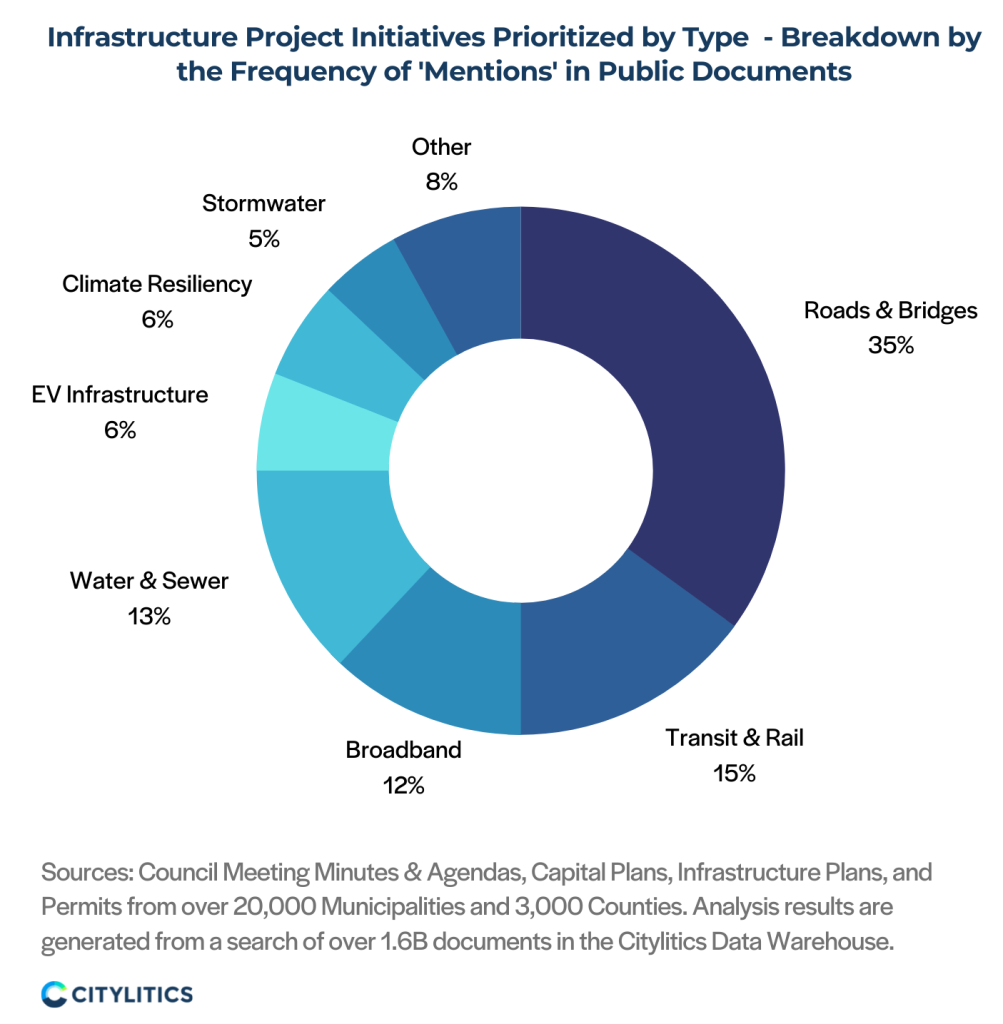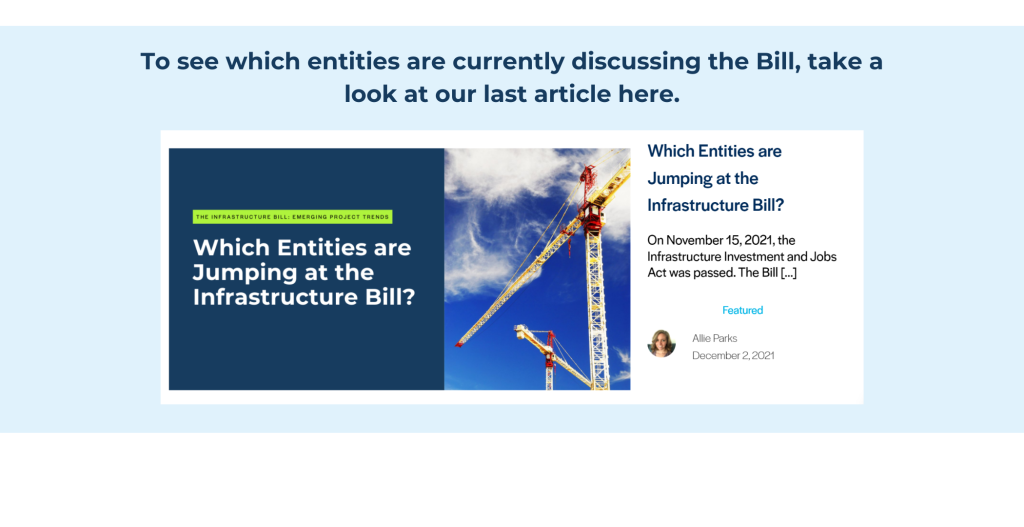Citylitics continues our analysis of emerging infrastructure market trends as a result of the Infrastructure Bill. We explore funding sources to highlight trends emerging from the Bill, aggregated from council meeting minutes & agendas, capital plans, infrastructure plans, and permits from over 20,000 municipalities and 3,000 counties. This includes references to the Bill, or ‘mentions’, in public documents and surrounding context within the first two weeks the Bill was signed.
Since the Infrastructure Bill places an emphasis on core infrastructure priorities such as roads, bridges, and other major projects ($110 Billion), passenger & freight rail ($66 Billion), and public transit ($39.2 Billion), conversations around planning priorities are naturally focused on these areas.
Based on an analysis of 20,000+ municipalities and 3,000 counties, Citylitics found that roads & bridges have been most widely prioritized (35%), followed by projects relating to transit & rail (15%), water & sewer (13%), and broadband (12%).

Citylitics has also found that municipality size plays a role in the types of projects being prioritized. While smaller municipalities are more interested in discussing infrastructure projects that correlate with financial insecurity (for example, repairing infrastructure and ensuring greater internet access), larger municipalities are focused on what might be considered more ambitious projects, such as those relating to climate resiliency. Transit is also a high priority amongst larger municipalities.
Conclusion
For companies that cover a breadth of industry segments – transportation, water, energy, etc. – Citylitics’ analysis indicates that roads, bridges, transit, and rail are key areas to allocate resources in preparation for upcoming projects, including strategic hires with expertise in those areas.
Industry professionals may also wish to consider municipality size when reaching out to prospects in the wake of the infrastructure bill, with an emphasis placed on repairs for smaller locals and aspirational topics such as climate resiliency for larger ones.
—–
Citylitics will continue to track and report on trends relating to the Bill over the coming months as planning discussions evolve across states and municipalities. Follow us on LinkedIn to make sure you don’t miss an update.
About Citylitics’ Data Engine
Citylitics aggregates over 1.6B public documents & records from 30,000 cities & utilities across the U.S. and Canada, making us the largest data engine in the industry and only source of predictive intelligence on where, how, and why upcoming investments will be made. Our data sources include capital plans, council meeting minutes & agendas, infrastructure plans, permits, financial data, and more.
Our intelligence aggregation system is unique in the industry as it allows us to collect content from websites and documents, index it, categorize it, and then make it available to our search algorithms and in-house Intelligence Analysts. We combine a balance of algorithm and data searching tools to comb through a vast dataset with applied expertise to filter out irrelevancy, resulting in best-fit opportunities.


